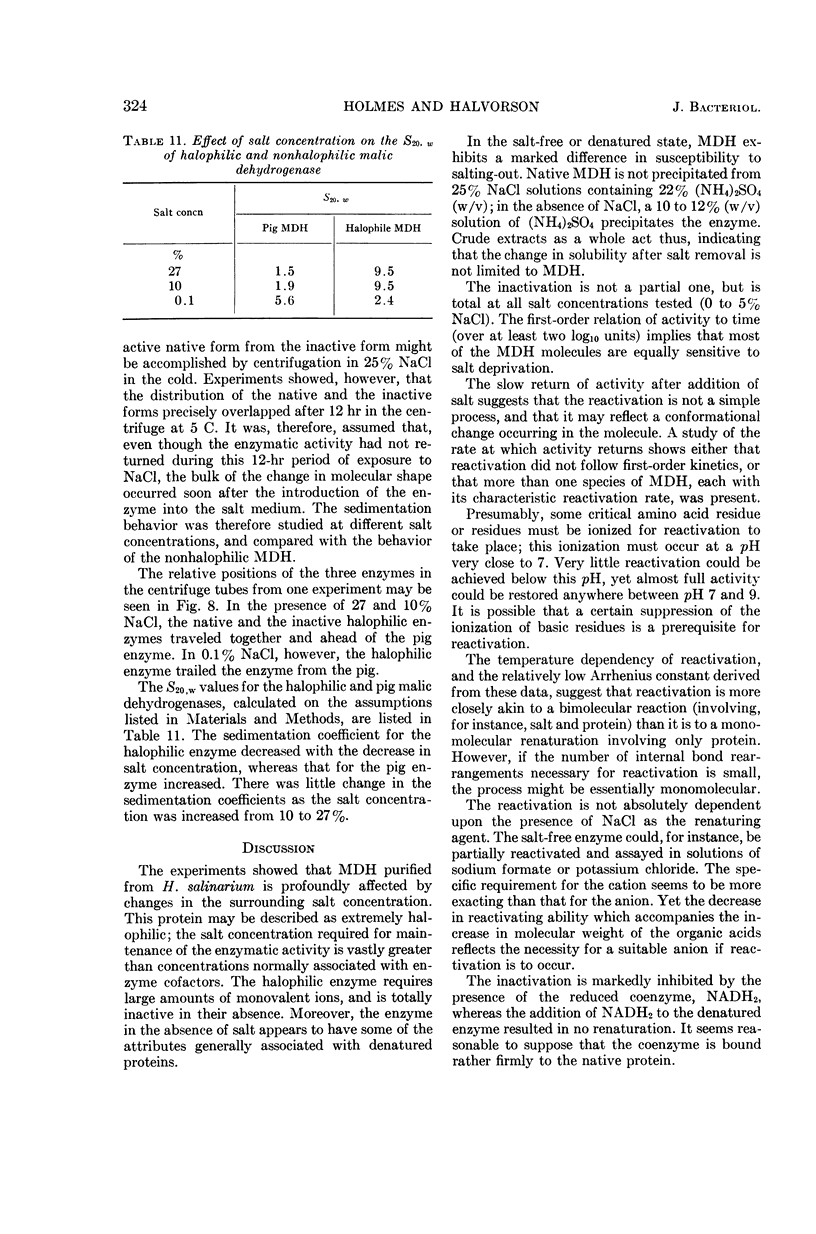Abstract
Holmes, P. K. (University of Illinois, Urbana), and H. Orin Halvorson. Properties of a purified halophilic malic dehydrogenase. J. Bacteriol. 90:316–326. 1965.—The malic dehydrogenase (MDH) from Halobacterium salinarium required high concentrations of monovalent ions for stability and activity. Studies of inactivation rates at different salt concentrations suggested that approximately 25% NaCl (w/v) is required to stabilize MDH. From 50 to 100% reactivation, depending on the salt concentration present during inactivation, could occur in 2.5 to 5 m NaCl or KCl. The optimal salt concentration for activity of MDH was a function of the pH, and ranged from 1 to 3 m NaCl or KCl. The effect of salt concentration on the pH-activity curves occurred chiefly below pH 7.0. Inactivation of MDH with heat or thiol reagents showed that the enzyme was more labile in the state induced by absence of salt. The activation of MDH by salts was attributed to a decreased rate of dissociation of MDH and reduced nicotinamide adenine dinucleotide (NADH2). The inactivation of the enzyme in the absence of salt could be largely prevented by the presence of NADH2. The S20.w of MDH decreased threefold at low salt concentrations. The enzyme was assumed to be in its native compact configuration only in the presence of a high concentration of salt.
Full text
PDF










Selected References
These references are in PubMed. This may not be the complete list of references from this article.
- ALBERTY R. A. Enzyme kinetics. Adv Enzymol Relat Subj Biochem. 1956;17:1–64. doi: 10.1002/9780470122624.ch1. [DOI] [PubMed] [Google Scholar]
- BAXTER R. M. An interpretation of the effects of salts on the lactic dehydrogenase of Halobacterium salinarium. Can J Microbiol. 1959 Feb;5(1):47–57. doi: 10.1139/m59-006. [DOI] [PubMed] [Google Scholar]
- HOLMES P. K., HALVORSON H. O. PURIFICATION OF A SALT-REQUIRING ENZYME FROM AN OBLIGATELY HALOPHILIC BACTERIUM. J Bacteriol. 1965 Aug;90:312–315. doi: 10.1128/jb.90.2.312-315.1965. [DOI] [PMC free article] [PubMed] [Google Scholar]
- MARTIN R. G., AMES B. N. A method for determining the sedimentation behavior of enzymes: application to protein mixtures. J Biol Chem. 1961 May;236:1372–1379. [PubMed] [Google Scholar]
- MASSEY V. Studies on fumarase. II. The effects of inorganic anions on fumarase activity. Biochem J. 1953 Jan;53(1):67–71. doi: 10.1042/bj0530067. [DOI] [PMC free article] [PubMed] [Google Scholar]
- VAN EYS J., CIOTTI M. M., KAPLAN N. O. Yeast alcohol dehydrogenase. II. Properties of the catalytically active site. Biochim Biophys Acta. 1957 Mar;23(3):581–587. doi: 10.1016/0006-3002(57)90380-3. [DOI] [PubMed] [Google Scholar]


